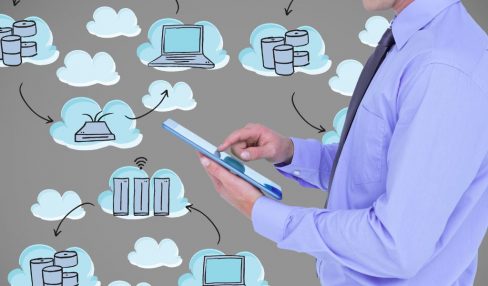How Headless CMS Supports Content Repurposing In 2025?
13 August 2025
8 Mins Read

- How Headless CMS Supports Content Repurposing In 2025?
- 1. Linking Content Strategies To Lifecycle Stages:
- 2. Delivering Omnichannel Access From One Location:
- 3. Enhancing Personalization Across Every Stage:
- 4. The Ability To Change Campaigns And Test On The Fly:
- 5. Better Collaboration Across Teams With Access To Centralized Content
- 6. Continuous Support And Engagement After Buying:
- 7. Empowering Lifecycle Automation Via API Integration:
- 8. Exercising Lifecycle Marketing Efforts At Scale Across Regions And Audiences:
- 9. Measuring Success Of Lifecycle Content:
- 10. Customer Messaging Is Centralized Across Teams And Apps:
- 11. Lifecycle Marketing Can Be Extended To Future Channels:
- Content Governance Is Easier During The Customer Lifecycle:
- Know How Headless CMS Supports Content Repurposing!
Today’s topic: How headless CMS supports content repurposing in 2025?
Where once the customer lifecycle was merely something to understand for branding efforts and consistent touchpoints as brands tried to emerge victorious in competitive marketplaces with custom, data-driven marketing, it’s become part of the future of branding itself.
Brands need to foster the perfect message at the perfect time, whether converting or retaining at the awareness or advocacy stage. However, traditional CMS does not always facilitate this type of transferability and contextual relevance across the various channels and customer lifecycle stages. Yet a headless CMS does.
A headless architecture, which dissociates the content creation from the presentation layer and promotes modular delivery via API, empowers marketers to render scalable, timely, relevant content at any channel, under any setting, during any customer lifecycle stage.
How Headless CMS Supports Content Repurposing In 2025?
So, without wasting let’s check out how headless CMS supports content repurposing in 2025:
1. Linking Content Strategies To Lifecycle Stages:
Customer lifecycle marketing relies on delivering the right message at the right time. The content must inform and engage in awareness, give confidence and engage in conversion, and provide value to strengthen the relationship post-purchase or subscription.
A headless CMS makes this connection to content strategies relative to lifecycle stages easy by properly indexing and tagging assets. Register for Storyblok’s next event to explore how leading brands implement this lifecycle-focused content approach in practice.
For instance, organizations can align pre-prepared content modules to awareness, consideration, conversion, and retention phases provided as dynamically deployed arrays throughout customer engagements and ensure the message serves customer needs at that specific point in the journey.
2. Delivering Omnichannel Access From One Location:
Customers will not remain on one channel; they will go from a website to an application to an email to a live chat to social media to a customer support portal. Delivering consistent lifecycle content across all these channels can be challenging and arduous with a traditional CMS. A headless CMS allows brands to create content once and deploy it anywhere via APIs.
This means that regardless of where the customer interacts, lifecycle-focused messaging remains consistent, on time, and relevant, whether helping new customers through installation or trying to reactivate customers who have strayed.
3. Enhancing Personalization Across Every Stage:
Every customer journey is different. Thus, personalization is critical to the success of lifecycle content. A headless CMS supports personalizing efforts based on the lifecycle by integrating with third-party solutions such as customer data platforms (CDPs), CRMs, and even behavioral insights tools.
Based on customer profile, website interactions, past purchases, or even current lifecycle accomplishments, content blocks can be quickly selected and delivered.
New customers may receive different onboarding instructions than returning customers receiving promotional loyalty discounts.
The acknowledgment that content is relevant more directly based on how a customer interacts with the brand fosters greater engagement and hastens customer lifetime value.
4. The Ability To Change Campaigns And Test On The Fly:
There are times when campaign performance, customer sentiment, or current events necessitate rapid change. With a headless CMS, marketing teams can easily update lifecycle content without the threat of assets breaking down or other interruptions in the process.
They can use staging and version control to test on the fly, changing a CTA during a consideration period to see if conversion rates increase or updating onboarding guides to see if that better clarifies drop-off.
Access like this enables marketers to continually update and adjust every aspect of the lifecycle touchpoints to ensure each communication does what it needs to allow the customer to be pushed along.
5. Better Collaboration Across Teams With Access To Centralized Content
Creating and executing lifecycle content doesn’t happen in a bubble – product marketers, content strategists, designers, and customer success teams add to the nuancing.
A headless CMS helps with holistic integrity through structured content models and role-based permissioning so that all can add to and access what’s needed without worrying about deviating from brand or compliance standards. Because lifecycle content concerns long-term customer journeys with your brand, having one place to add decreases redundancy, increases accuracy, and ensures all messaging aligns across the strategic vision.
6. Continuous Support And Engagement After Buying:
Customer lifecycle marketing does not end after a purchase; lifecycles permeate into onboarding, support, and post-purchase advocacy efforts as well. With a headless CMS, onboarding documentation, FAQs, how-to articles, product updates, and renewal notices can all be generated and stored in blocks.
This can be pushed out via email, prompted within product experiences, or surfaced within support channels, all from the same source of truth. This enables brands to provide continued education beyond the purchase, allowing less churn, more satisfaction, and transforming customers into brand advocates.
7. Empowering Lifecycle Automation Via API Integration:
One of the best perks of headless CMSs is the ability to plug into marketing automation tools. Lifecycle marketing depends on automated workflows triggered by actions such as signing up, purchasing, inactivity, and renewal.
If headless CMS content exists in the ether, orchestrated via APIs, automated systems can call upon that content, block by block, when it’s time to engage. Welcome series and reactivation emails, loyalty efforts, the CMS has block content that’s appropriate for the moment and fuels automatic outreach that feels personalized and aware of context.
8. Exercising Lifecycle Marketing Efforts At Scale Across Regions And Audiences:
As brands grow larger and more global with audiences, certain lifecycle content can change based on relevance or cultural/geographic considerations. A headless CMS enables regionally specific versions of lifecycle content to live within a system while still assigning to the master asset.
Other countries can execute lifecycle efforts that resonate with geographic perspectives without losing brand identity. Onboarding messages to renewals for the Asian audience and the European audience, headless CMS content can be deployed at scale without having to recreate the wheel each time.
9. Measuring Success Of Lifecycle Content:
After marketers get the content live for different stages of the customer journey, they need access to whether that content is doing its job. A headless CMS has tracking capabilities with analytics integrations on a per-content block basis as well as by phases and specific audience personas.
Marketers can see CTRs, conversions, and feedback from users associated with lifecycle efforts tagged with details from headless CMS pieces.
What’s working and what’s not creates awareness of pain points and gaps in the journey, but also improves messaging and customer experience that lasts for future efforts and increases ROI from integrated strategies.
10. Customer Messaging Is Centralized Across Teams And Apps:
Often, customers receive different lifecycle messages from different places. Sales creates one onboarding experience, support develops another FAQ, and marketing sends out a re-engagement email campaign, and none of these initiatives are connected.
A headless CMS centralizes the messaging and provides a structured content source that exports the same singular message to all connected apps and teams. When all teams utilize the same structured system, the customer gets the message that was intended without fear of conflicting meanings based on whom they contacted.
11. Lifecycle Marketing Can Be Extended To Future Channels:
The current digital market relies on various channels to communicate, including email, SMS, chatbots, developments in AI, and other platforms that did not exist a decade ago. When new touchpoints emerge, brands will have to support a channel-agnostic content approach with their onboarding experiences to stay relevant.
A headless CMS creates a future-proof content approach for lifecycle marketing, allowing access to structured content via APIs for any and all existing or yet-to-be-created platforms for onboarding and other lifecycle content needs. Thus, re-engagements and loyalty programs can apply to the customers of today just as they can apply to the customers of tomorrow.
Content Governance Is Easier During The Customer Lifecycle:
Yet as the content empowering the customer lifecycle becomes increasingly personalized, the need for governance only intensifies to ensure branding remains intact, compliant, and consistent.
The more enterprises become personalized from marketing emails to in-app or website interactions to future channels via chatbot and voice technology, the easier it is for pieces of content to slip through the cracks and outside the realms of approved messaging.
The business risks an inconsistent tone, client-facing offering mistakes due to insufficient governance, outdated terms and conditions, and legal disclaimers due to unapproved edits, or even projecting a false image of a product if it’s not accurately vetted within a time-sensitive marketplace.
When internal teams seek to push out approved content for an internal campaign within the blink of an eye or secure capital for a new marketing initiative just as fast, governance could get in the way, but what companies need to recognize is that without it, their reputations are on the line.
A headless CMS addresses this challenge because it enables businesses to integrate the governance structure into the content creation and even dissemination process.
For example, workflows can be customized where compliance and legal teams dictate requirements, where brand managers must approve any change to brand-altering content prior to launch.
Alternatively, if specific edits are made that fall outside compliance, they will be locked from going live. Versioning is tracked, so all changes or lack thereof can be processed and approvals timestamped to shed visibility on how branded content changes over time.
With role-based access controls, only designated team members can change specific branded assets or access sensitive campaign-related materials. That’s governed correctly, even if someone has good intentions, they may not have the access needed to legitimately make those changes.
Know How Headless CMS Supports Content Repurposing!
Enabling customers over their lifecycles doesn’t occur merely from incremental content updates in a bubble; it requires a scalable, cohesive solution growing parallel to intent, execution, and expectation.
As a digitally-dependent universe requires hyper-personalization and omnichannel experiences, brands can no longer rely upon static messaging and disjointed content ecosystems to carry them to the next step.
A headless CMS makes this possible. By decoupling content from presentation and offering structured, modular content models within a headless environment, marketing teams can easily create, manage, and deploy lifecycle communications across every digital engagement opportunity.
From welcoming someone browsing your website to championing your product for years to reengaging someone who’s fallen dark to thanking someone publicly for their engagement, the headless CMS provides the infrastructure to ensure communications are relevant and timely in someone’s custom journey.
Furthermore, what makes a headless CMS unique is that it can scale these experiences across channels, markets, and teams without creating content silos or operational bottlenecks. Content can be reused and repurposed across channels and distributed via APIs to websites, apps, emails, or even in-product UIs from one source of truth. This provides consistency in voice and message while allowing flexibility in delivery due to changing circumstances.
This framework elevates lifecycle content strategies from preliminary touchpoints to long-term retention, so every piece of content has a reason and creates meaningful business rewards.
For brands that understand the benefit of customer-centric marketing initiatives, implementing an ability to operate a headless CMS is more than a technological enhancement.
It enables marketing teams to operate quickly and efficiently through personalization and team alignment to give consumers what they need when they need it. When every step matters and every intersection needs to be fulfilled, content is the connective tissue for satisfaction, loyalty, and ongoing success.
Read Also:



















Comments Are Closed For This Article